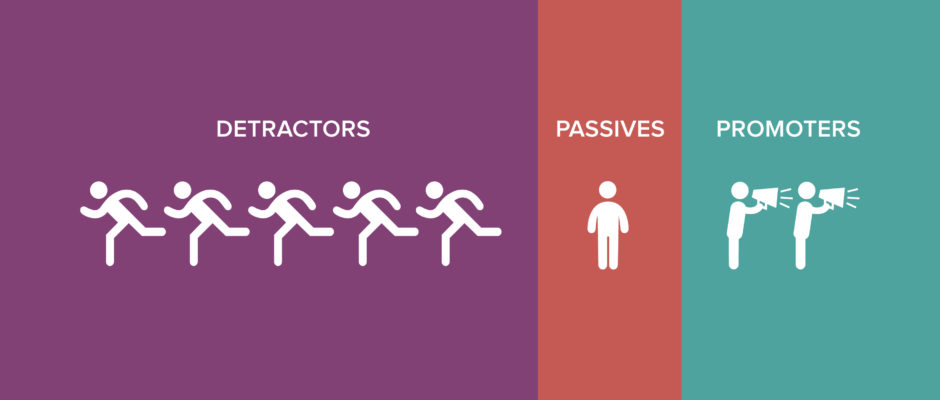For a growing startup, customer feedback exists in so many different forms, it can often be hard to nail down:
- A passing comment from a customer at a conference
- A written comment on a blog post
- An NPS survey response
- A direct email to the CEO
- A tweet
Any of the above feedback methods (and many more) can produce extremely valuable information that can be used to guide your product roadmap, product defect prioritization and your day-to-day decision making.
Feedback is the one true indicator of customer happiness
We’re surrounded by metrics and data analysis, but feedback is the only direct measurement of customer happiness — what can be more direct than your customers literally telling you how they feel about your product? There are many ways to try and infer customer happiness, such as analyzing behavior within the product, but these are often vague data points that can’t quite get to the core of customers’ feelings.
But not all feedback is equal
Feedback can be:
- Qualitative (e.g. describing a desired feature via email) or quantitative (submitting an NPS score)
- Negative (“this is bad!”) or positive (“this is badass!”)
- Explicit (“I love this feature!”) or implicit (“this support ticket suggests that they love this feature!”)
How you extract value from feedback depends a lot on what data you have to play with. Quantitative data lends itself to numeric analysis, for example. Qualitative data is harder to analyze at scale.
Retention is all about understanding customers
In the context of a subscription business, success is almost entirely pinned on one thing: minimizing churn — or increasing customer retention (same thing). A subscription is a contract between the vendor and customer, a promise to deliver ongoing value. Falling short of this promise is a sure-fire path to heavy churn.
It’s clear that customer feedback as a critical indication of the health of customers and can help us minimize churn. So why are we so bad at handling feedback in general?
I spoke to two people who are building a product to help solve this exact problem: Sarah Hum and Andrew Rasmussen, co-founders of Canny.
A bit about Canny
Canny is a SaaS product that manages the capture and tracking of product feedback. Sarah and Andrew left their former jobs at Facebook to start the company when they realized there was a real opportunity for customers to be far more engaged with companies and services.
“As a user, it always felt like companies didn’t care. There was either no way to give feedback at all or it was a simple email form.”
Sarah Hum, Canny
I chatted with Sarah and Andrew to get their input on five key questions I had about feedback. The following is a summary of five key questions we discussed.
1. What are businesses doing wrong with feedback, or what could they improve?

The bottom line is this: collecting and making sense of customer feedback at scale is a resource-intensive process.
One of the biggest difficulties faced by growing businesses is not that the feedback isn’t there — there’s plenty of it. It’s just stored in many disparate systems across the company, without any centralized place to index or manage it. Many different teams interact with customers on a daily basis, but unless the company has a structured process for handling feedback, it just gets ingested and forgotten.
How many times have you seen customer feedback posted in your Slack team, in the form of a quote from a team member? Where does the feedback go after that?
This all leads to problems on the customers’ side. Because of poor or non-existent processes for handling feedback, there’s often no follow up or action taken. This leads to everyone feeling like they’re not really heard, which in turn is a disincentives for them to leave any in the first place. Cue a downward spiral.
2. How can customer feedback be made more actionable within a business?
“You’re building for your customers — at the end of the day your job is to solve problems for your customers, so you need to always have this pulse on what they want.”
It’s tempting here to bring out the Henry Ford “faster horses” quote. But there’s actually a lot of sense in building what your customers are asking for, if you do it in a way that’s aligned with the company vision and makes sense for a wide enough segment of your core customer base.
To succeed here, it’s important to look beyond the high level analysis and slice the data a bit. Rather than:
“What’s my most requested feature?”
how about
“What’s the most requested feature for enterprise customers with high engagement?”
This segmentation technique can help you blend the data on what your customers want with your own vision an product roadmap. It’s about balancing product vision with requested features.
3. How do you handle feature requests that have significant revenue attached to them?
Sarah and Andrew told me about an occasion where a particularly large enterprise customer approached them asking for several features that clearly weren’t going to be useful for the vast majority of their existing user base. At this point, they were caught between being able to close a big deal and building features that core customers actually wanted — not any easy decision.
“When you’re a team of two, you have to really be critical about what you decide to prioritize. It creates a lot more responsibility and you have to support such a feature further down the line.”
Sarah Hum, Canny
This is my key takeaway here: businesses have a tendency to under-estimate the cost of building and maintaining features, particularly when faced with a large up-side (closing a huge deal). Downsides like supporting the custom feature in future versions, fixing bugs, and the technical debt incurred by having such a feature as part of the codebase etc. are often forgotten.
4. SaaS has an obsession with NPS. Is it actually useful?

Net Promoter Score (NPS) is a popular measure of customer satisfaction in SaaS and subscription businesses. In involves sending out a survey, usually on a quarterly basis, asking all customers to rate their experience with the product.
One key benefit of NPS is that most implementations of it have converged to become a standardized experience for the end user. In other words, when a user sees the prompt for a 1-10 rating, they know exactly what to expect. This is a huge benefit in an area where the smallest amount of friction can lead to a huge drop in response rate for surveys.
But are the results actually useful for the business?
As Sarah and Andrew explained, there are a lot of differing ways of collecting feedback, of which NPS is one. They all solve slightly different problems and serve different goals. For example, if you’re assessing the potential impact of a pricing change it makes sense to send out a highly-targeted survey to users. With NPS, the value is in the ongoing score, and the delta (change) in that score from one quarter to the next. It’s rarely about the absolute number. If you want to get deeper insights from your customers, it’s likely that you’ll need a more specific survey.
5. How can you encourage more feedback from customers?
Users almost always have something to say about your product. Sometimes that motivation to convey feedback is very low (they don’t feel particularly strongly) and other times it’s much higher (something annoyed or delighted them). If you want users to be more vocal, you simply need to lower the threshold of friction required to share their thoughts. If there’s a chat box right there on the screen, that’s very low friction. If they have to email a support desk address, that’s definitely more friction (perhaps more than they’re willing to put up with).
Like ideas, feedback is ephemeral and fragile, and needs to be captured and recorded in the moment — it’s up to you to enable this.
6. How can you ensure that users feel like their feedback is taken onboard?
I once tweeted a feature request that I felt particularly strongly about to the team at Spotify. The team were very responsive, thanking me for my input and linking to an item in their community hub where… over five thousand people had already voted for the exact feature. I was already deflated from the realization that my idea wasn’t at all original, but the fact that the request was sitting there forever with no prioritization from the team tainted my experience even more.
As a customer it can be disheartening to see your input cast aside or de-prioritized.

Transparent roadmaps are a nice way to give customers some confidence that — while you may not be building the exact feature they requested — you do in fact have a full pipeline of new features being worked on by the team. Being vocal about requested features with frequent updates can also help customers understand your product priorities. It’s important to set expectations, and avoid the trap of the perpetually “maybe soon” feature request. If it’s not happening, it’s not happening.
Thanks to Sarah and Andrew of Canny for their input on customer feedback and their journey building a SaaS company. They regularly publish excellent educational content over on their blog – you should check it out!
